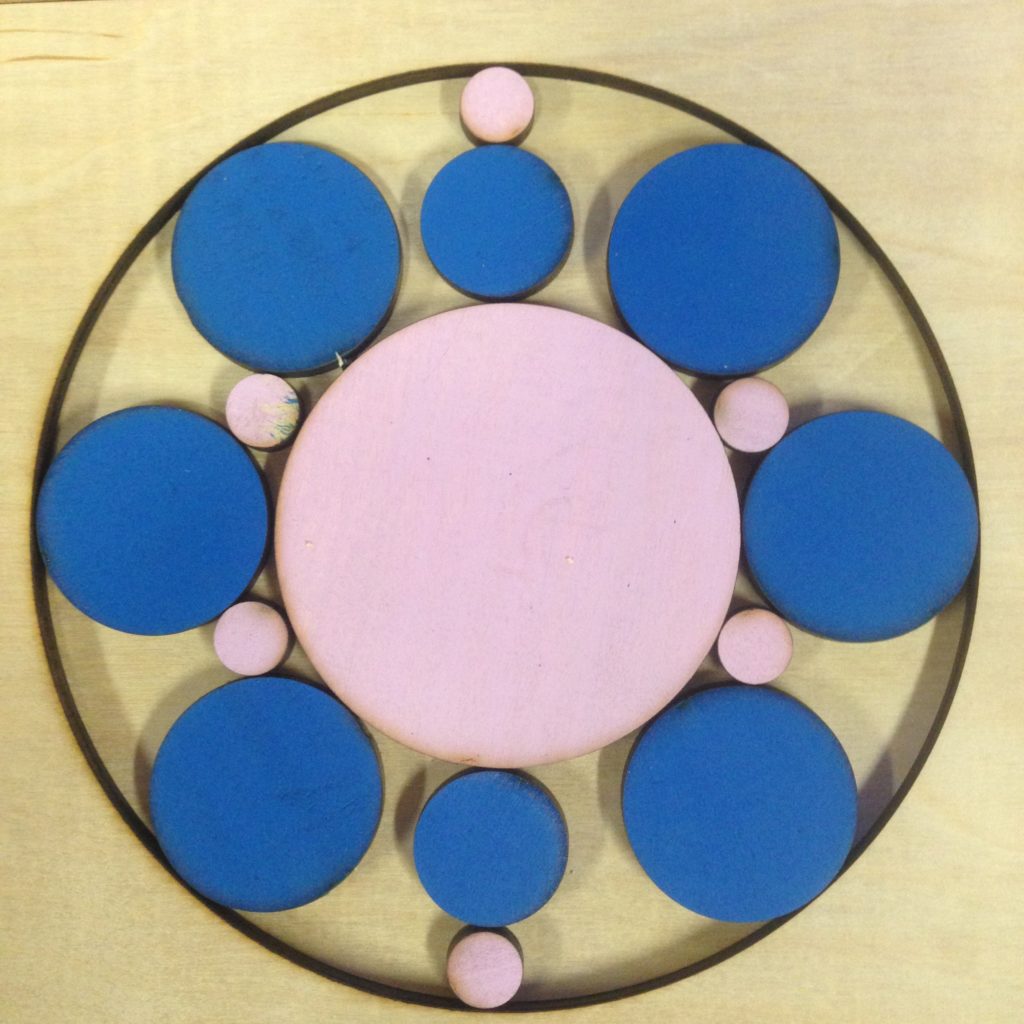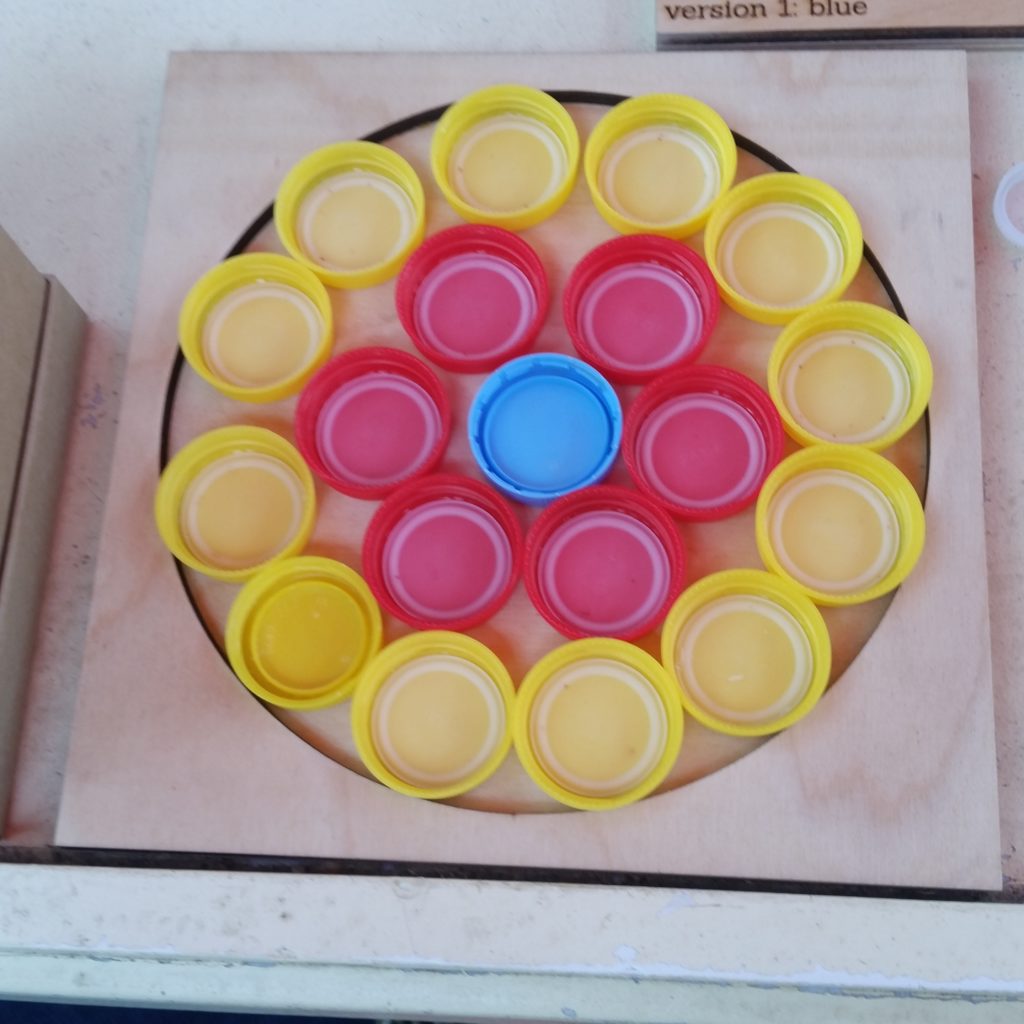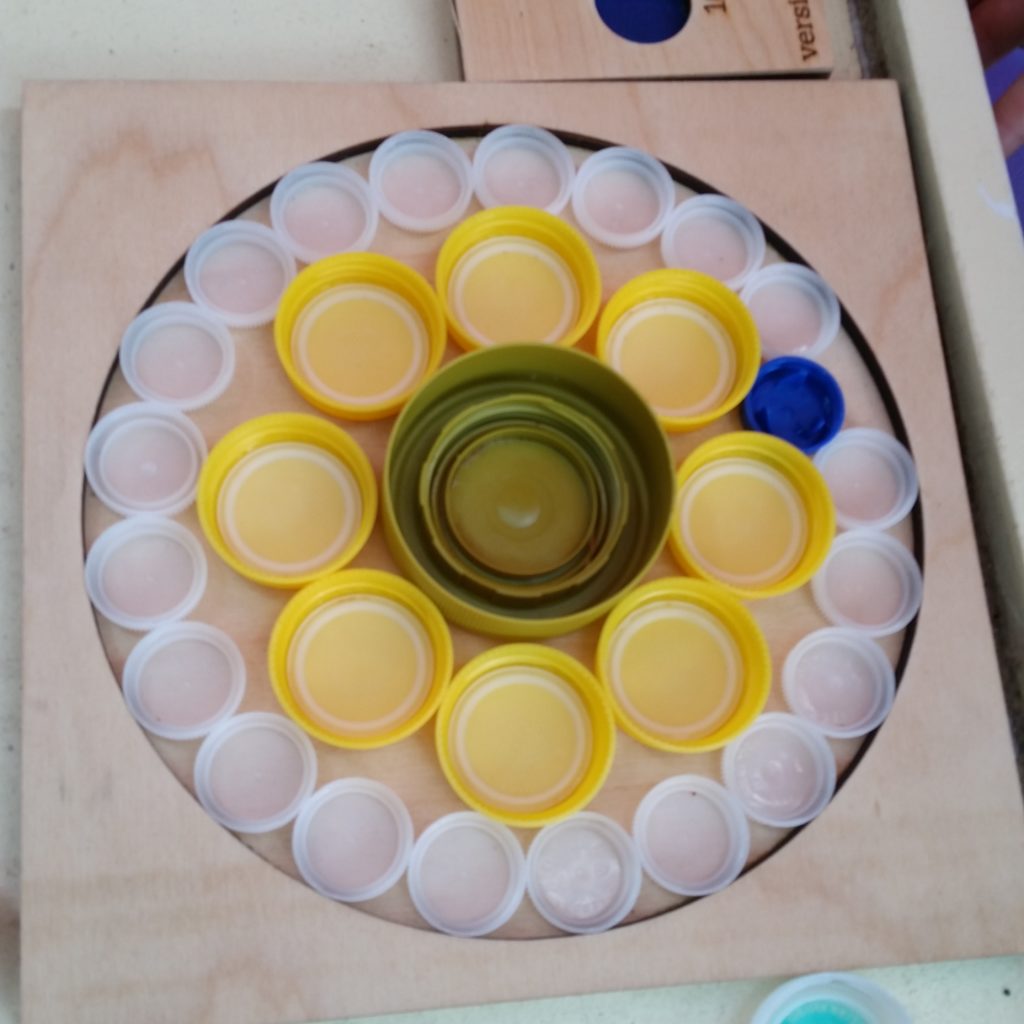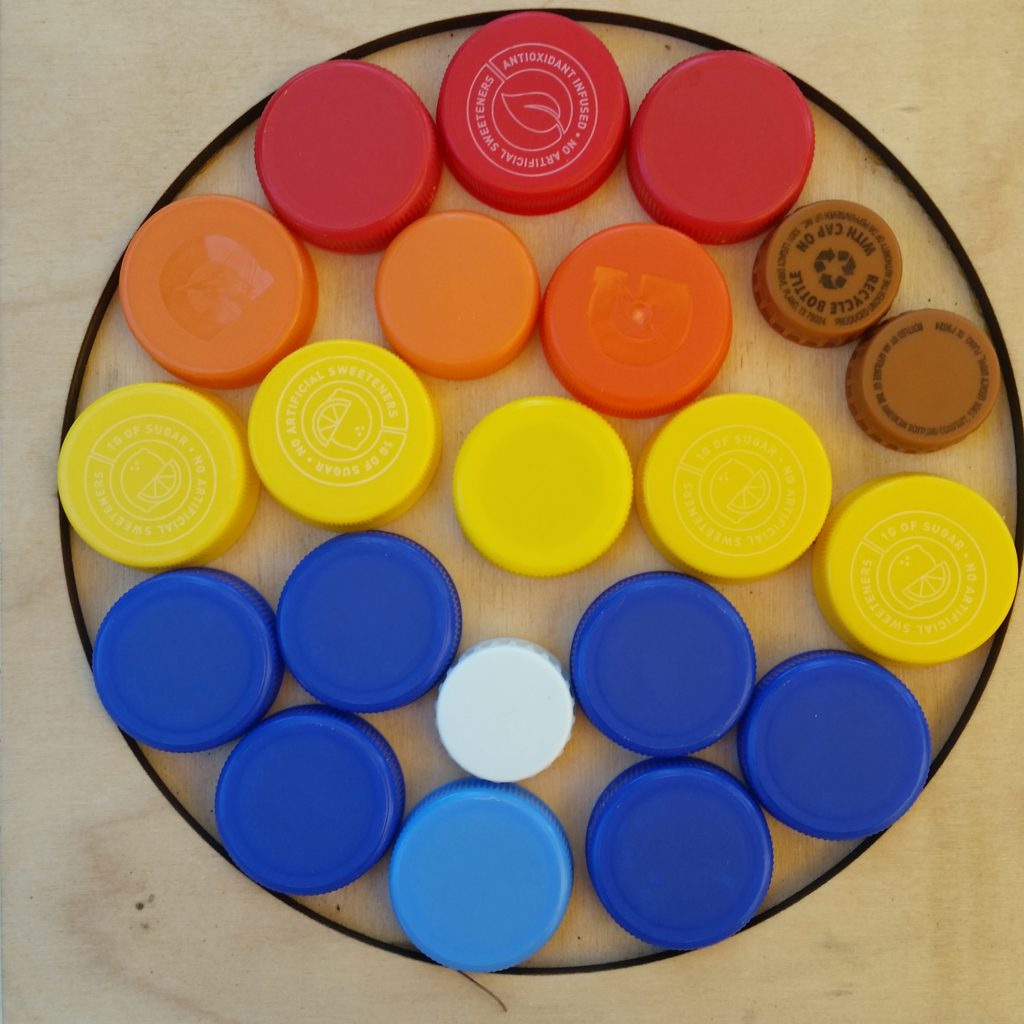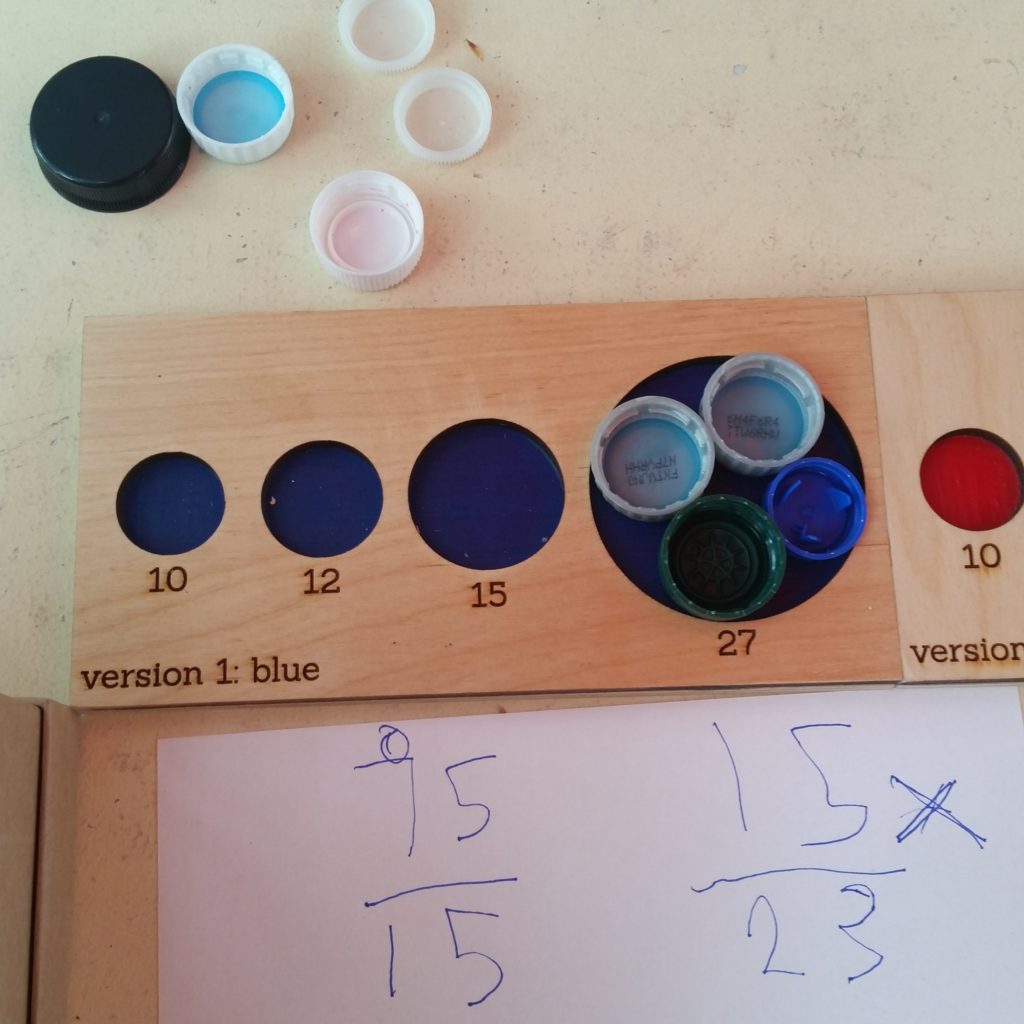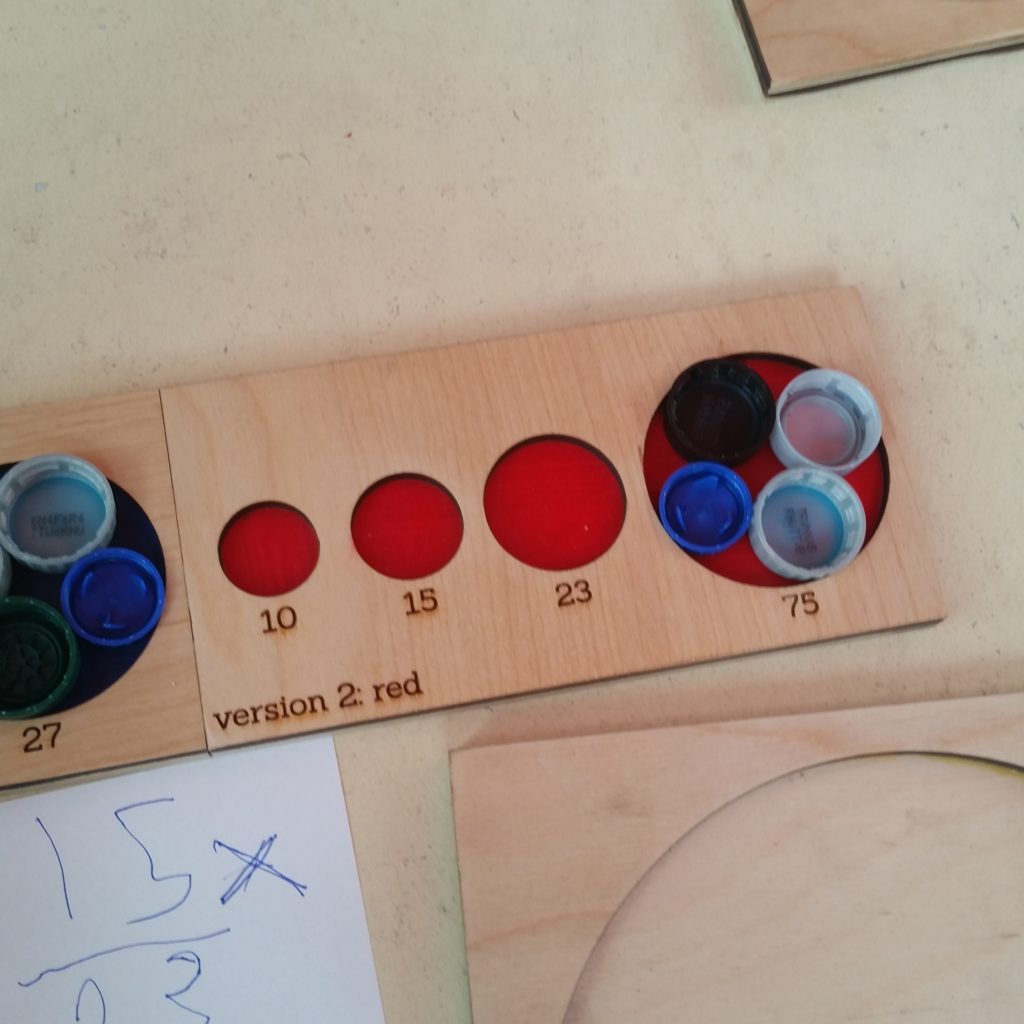The Circle Game was new at Math On-A-Stick this year. Here’s how it works:
- Pick your circle. We have small (4 inches in diameter), medium (6 inches), and large (8 inches).
- Fill it with bottle caps of various sizes and colors, but without stacking or squashing.
- Each size of cap has a point value—total these up to calculate your score.
- Make some changes to improve your score. Can you match or beat the high score?
- One additional factor—there are two scoring systems: Blue and Red. Each system has a base score of 10 points for the smallest cap, and then different scores for the other three sizes. How do these two scoring systems lead to different strategies for getting high scores?
Origins
The Circle Game came from an idea I had that a large collections of circles might be a fun thing to play with. So we saved every plastic top in our household last winter, adding each to the collection in a one-gallon Ziploc bag.
The next question was “What would be fun to do with this large collection of circles?” and because of a 6-inch circle frame left over from an old prototype (that was itself inspired by the amazing T-shirt that Jonathan Osters wore to a conference in 2016), I started putting circles inside circles.
Also, I was likely inspired by the delightful Desmos activity, Penny Circle.
After a couple rounds of circle packing, I started wondering how to measure and compare the various packings. A little (very little) background calculus knowledge led to a couple of hypotheses, and then to two scoring systems to investigate these hypotheses. (Hit me up on the Contact page if you want spoilers about those hypotheses.)
Practical Matters
Our set at the fair is made of two layers of quarter-inch baltic birch—one layer as the frame; the other layer as backing. My original prototypes were made the same way but with cardboard, which is cheap and plentiful (probably free in your nearest recycling pile), and which is very easy to laser cut (and honestly, a careful hand and a sharp X-acto knife would probably do almost as well).
If you’re interested in playing along, the files are right here:
My advice on caps is to have people save them for you, and then sort through their collections yourself. This is much easier than specifying and communicating precisely which caps you need.
We ended up using these four sizes of bottle caps:
Extra small: Found on Swanson’s broth boxes and some water bottles
Small: From your standard 20 oz. pop bottle
Medium: Screw-top milk jugs
Large: Simply Natural juice bottles
Note that standard bottle caps may vary by region, so you can feel free to adjust the point values and sizes based on what’s readily available to you.
What math did we see?
LOTS of arithmetic. Pages of arithmetic, mostly addition and multiplication, and lots of reasoning around that arithmetic. An example:
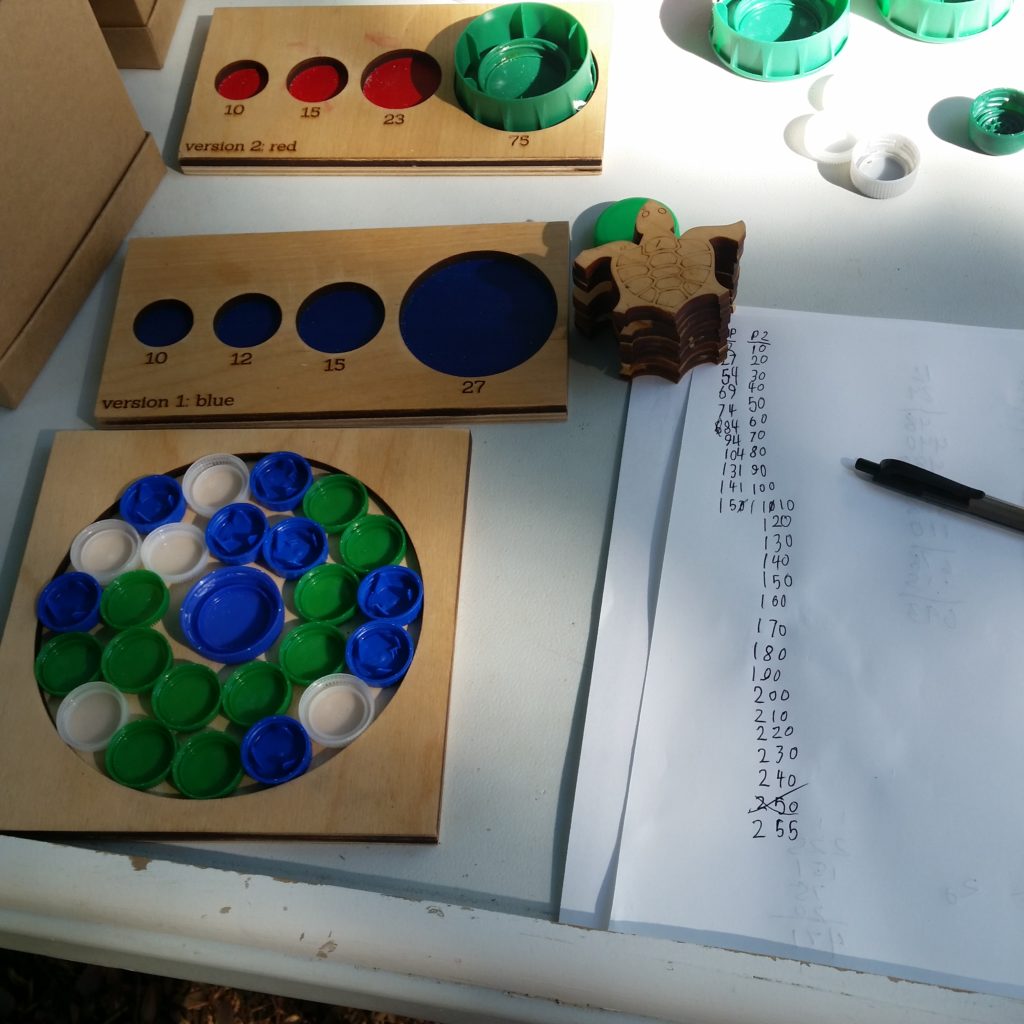
Spatial reasoning, as exemplified in these beautiful arrangements.
Proof and argumentation. In the image below, an approx. 11 year-old has made the claim that you want to use small tops in the blue game (left), but large tops in the red game (right) if you’re shooting for a high score.


